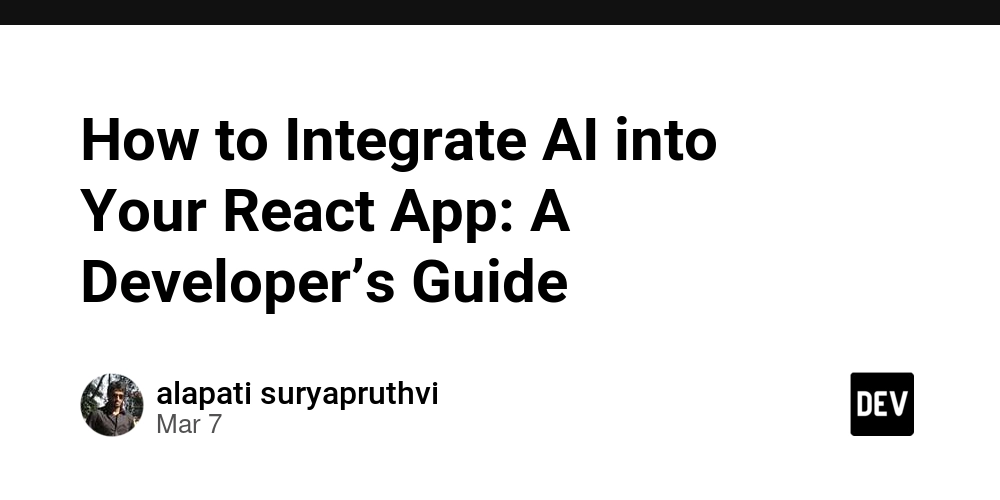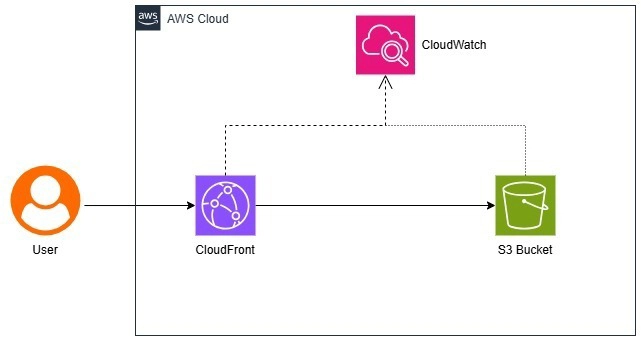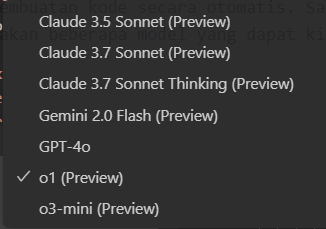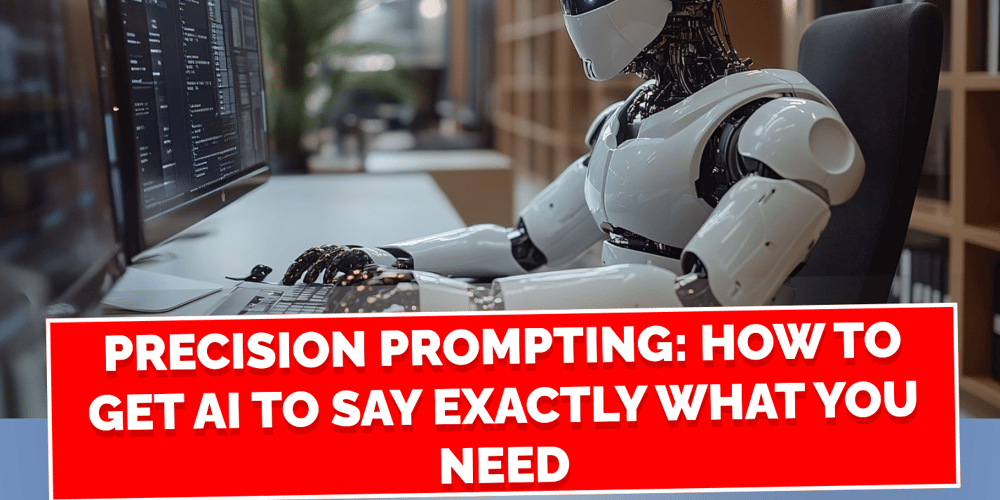How to Integrate AI into Your React App: A Developer’s Guide
Artificial Intelligence (AI) is rapidly transforming web applications, enhancing user experiences through intelligent automation, personalized recommendations, and interactive chatbots. As a React developer, integrating AI into your applications can set you apart and showcase your ability to work with cutting-edge technologies. In this guide, we’ll explore how you can bring AI capabilities into your React applications with practical examples. Why Integrate AI into Your React App? Before diving into the implementation, let’s understand why AI can be a game-changer for React applications: Personalization: AI can tailor content and recommendations based on user behavior. Automation: AI-powered chatbots and voice assistants can handle common queries, reducing manual efforts. Enhanced UX: Features like autocomplete, predictive search, and AI-powered image recognition improve user experience. Data Insights: AI can process large amounts of data to generate useful insights for decision-making. Common AI Use Cases in React Apps 1. AI-Powered Chatbots Integrate chatbots using OpenAI’s GPT or Dialogflow to provide conversational interfaces. 2. Smart Search and Autocomplete Enhance search functionality with AI-driven predictive text and recommendations. 3. Image Recognition Use AI models like TensorFlow.js to analyze images and detect objects in React applications. 4. Personalized Recommendations AI-driven recommendation systems suggest content, products, or media based on user preferences. How to Integrate AI in a React App Let’s walk through a practical example: Integrating OpenAI's GPT API to create an AI-powered chatbot in React. This is a very basic example of creating a chatbot using React. Step 1: Set Up a React Project Ensure you have a React project set up. If not, create one: npx create-react-app ai-chatbot cd ai-chatbot npm install axios Step 2: Get OpenAI API Key. We need OpenAI api key to be able to communicate with OpenAI api's and use GPT models. Step 3: Understanding OpenAI APIs Used In this project, we are using the following OpenAI API: Chat Completions API (/v1/chat/completions) This API allows us to send user messages to OpenAI's GPT model and receive AI-generated responses. The key parameters used: - model: Specifies the GPT model (e.g., gpt-3.5-turbo). - messages: An array of messages, where each message includes a role (user/system/assistant) and content (text of the message). - headers: Authentication headers containing the OpenAI API key. Example request: { "model": "gpt-3.5-turbo", "messages": [{ "role": "user", "content": "Hello!" }] } Example response: { "id": "chatcmpl-123", "choices": [ { "message": { "role": "assistant", "content": "Hello! How can I help you today?" } } ] } Step 4: Create a Chatbot Component using axios and communicate with OpenAI import React, { useState, useEffect } from "react"; import axios from "axios"; const Chatbot = () => { const [input, setInput] = useState(""); const [messages, setMessages] = useState([]); const handleSend = async () => { if (!input) return; const userMessage = { sender: "user", text: input }; const updatedMessages = [...messages, userMessage]; setMessages(updatedMessages); const response = await axios.post( "https://api.openai.com/v1/chat/completions", { model: "gpt-3.5-turbo", messages: [{ role: "user", content: input }], }, { headers: { Authorization: `Bearer ${process.env.REACT_APP_OPENAI_API_KEY}`, "Content-Type": "application/json", }, } ); const botMessage = { sender: "bot", text: response.data.choices[0].message.content }; const finalMessages = [...updatedMessages, botMessage]; setMessages(finalMessages); setInput(""); }; return ( {messages.map((msg, index) => ( {msg.sender}: {msg.text} ))} setInput(e.target.value)} placeholder="Type a message..." style={{ flex: 1, padding: "10px" }} /> Send ); }; export default Chatbot; Step 4: Run the Application npm start Next steps to implement more features from OpenAI Streaming responses for real-time AI replies Multi-turn conversations with better memory Integration with a database More advanced features Add Agents to let the AI decide actions Use Function Calling for dynamic API usage Implement RAG to retrieve private data

Artificial Intelligence (AI) is rapidly transforming web applications, enhancing user experiences through intelligent automation, personalized recommendations, and interactive chatbots. As a React developer, integrating AI into your applications can set you apart and showcase your ability to work with cutting-edge technologies. In this guide, we’ll explore how you can bring AI capabilities into your React applications with practical examples.
Why Integrate AI into Your React App?
- Before diving into the implementation, let’s understand why AI can be a game-changer for React applications:
- Personalization: AI can tailor content and recommendations based on user behavior.
- Automation: AI-powered chatbots and voice assistants can handle common queries, reducing manual efforts.
- Enhanced UX: Features like autocomplete, predictive search, and AI-powered image recognition improve user experience.
- Data Insights: AI can process large amounts of data to generate useful insights for decision-making.
Common AI Use Cases in React Apps
1. AI-Powered Chatbots
Integrate chatbots using OpenAI’s GPT or Dialogflow to provide conversational interfaces.
2. Smart Search and Autocomplete
Enhance search functionality with AI-driven predictive text and recommendations.
3. Image Recognition
Use AI models like TensorFlow.js to analyze images and detect objects in React applications.
4. Personalized Recommendations
AI-driven recommendation systems suggest content, products, or media based on user preferences.
How to Integrate AI in a React App
Let’s walk through a practical example: Integrating OpenAI's GPT API to create an AI-powered chatbot in React. This is a very basic example of creating a chatbot using React.
Step 1: Set Up a React Project
Ensure you have a React project set up. If not, create one:
npx create-react-app ai-chatbot
cd ai-chatbot
npm install axios
Step 2: Get OpenAI API Key.
We need OpenAI api key to be able to communicate with OpenAI api's and use GPT models.
Step 3: Understanding OpenAI APIs Used
In this project, we are using the following OpenAI API:
Chat Completions API (/v1/chat/completions)
This API allows us to send user messages to OpenAI's GPT model and receive AI-generated responses. The key parameters used:
- model: Specifies the GPT model (e.g., gpt-3.5-turbo).
- messages: An array of messages, where each message includes a role (user/system/assistant) and content (text of the message).
- headers: Authentication headers containing the OpenAI API key.
Example request:
{
"model": "gpt-3.5-turbo",
"messages": [{ "role": "user", "content": "Hello!" }]
}
Example response:
{
"id": "chatcmpl-123",
"choices": [
{ "message": { "role": "assistant", "content": "Hello! How can I help you today?" } }
]
}
Step 4: Create a Chatbot Component using axios and communicate with OpenAI
import React, { useState, useEffect } from "react";
import axios from "axios";
const Chatbot = () => {
const [input, setInput] = useState("");
const [messages, setMessages] = useState([]);
const handleSend = async () => {
if (!input) return;
const userMessage = { sender: "user", text: input };
const updatedMessages = [...messages, userMessage];
setMessages(updatedMessages);
const response = await axios.post(
"https://api.openai.com/v1/chat/completions",
{
model: "gpt-3.5-turbo",
messages: [{ role: "user", content: input }],
},
{
headers: {
Authorization: `Bearer ${process.env.REACT_APP_OPENAI_API_KEY}`,
"Content-Type": "application/json",
},
}
);
const botMessage = { sender: "bot", text: response.data.choices[0].message.content };
const finalMessages = [...updatedMessages, botMessage];
setMessages(finalMessages);
setInput("");
};
return (
{messages.map((msg, index) => (
{msg.sender}: {msg.text}
))}
setInput(e.target.value)} placeholder="Type a message..." style={{ flex: 1, padding: "10px" }} />
);
};
export default Chatbot;
Step 4: Run the Application
npm start
Next steps to implement more features from OpenAI
- Streaming responses for real-time AI replies
- Multi-turn conversations with better memory
- Integration with a database
More advanced features
- Add Agents to let the AI decide actions
- Use Function Calling for dynamic API usage
- Implement RAG to retrieve private data












































































































































































![[The AI Show Episode 142]: ChatGPT’s New Image Generator, Studio Ghibli Craze and Backlash, Gemini 2.5, OpenAI Academy, 4o Updates, Vibe Marketing & xAI Acquires X](https://www.marketingaiinstitute.com/hubfs/ep%20142%20cover.png)



























































































































![[FREE EBOOKS] The Kubernetes Bible, The Ultimate Linux Shell Scripting Guide & Four More Best Selling Titles](https://www.javacodegeeks.com/wp-content/uploads/2012/12/jcg-logo.jpg)



![From drop-out to software architect with Jason Lengstorf [Podcast #167]](https://cdn.hashnode.com/res/hashnode/image/upload/v1743796461357/f3d19cd7-e6f5-4d7c-8bfc-eb974bc8da68.png?#)





































































































.png?#)





.jpg?#)































_Christophe_Coat_Alamy.jpg?#)







































































































![Rapidus in Talks With Apple as It Accelerates Toward 2nm Chip Production [Report]](https://www.iclarified.com/images/news/96937/96937/96937-640.jpg)








































































































































